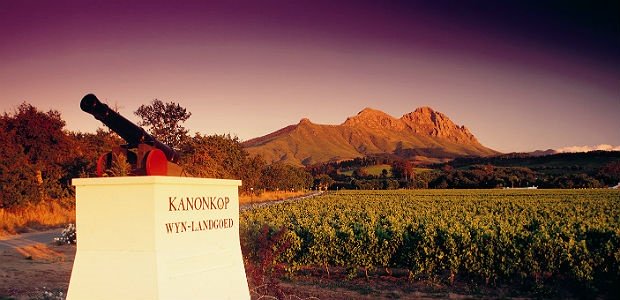It’s a lazy Saturday afternoon in Stellenbosch and, on a rather well-known wine farm, a teenager is watching rugby, which makes interruptions most unwelcome. And with the teenager’s father not home, it’s left to the young rugby fan to stick to the farm policy: no one allowed on the property without prior permission. Even if the guys at the entrance, with accents that sound like they might be American, do their best to talk their way in. Which is how, despite the Secret Service arriving to sweep the property, former USA president Bill Clinton was turned away from visiting Kanonkop.
It’s a terrific story, and one that doubtless comes up around the Krige dinner table on a regular basis. It will also likely be far better known from this week as ‘Kanonkop: The Making Of A Legend’ arrives, a very welcome addition to the canon of local wine literature. Emile Joubert has created a tome that’s part coffee-table book, part work of history, a delightful biography of an estate that’s become a cornerstone of the South African wine industry.
Paul and Johann Krige, the latest descendants of Paul Sauer, are the current owners, and it’s their family story that Joubert has been entrusted with telling. Despite the fact that Kanonkop has only been making its own wine since 1973, there’s a rich and colourful story to be told, celebrating an estate that’s far more than just the 2015 Paul Sauer blend that shot to fame with it’s 100-point rating, illustrated by both the book and a few glasses with both Johann Krige and his esteemed author.
Central to the story are the three winemakers, who between them have overseen every bottle of Kanonkop ever made, starting with a celebrity winemaker. Jan Boland Coetzee kicked off the winemaking at the estate, with the 1973 cabernet sauvignon still regarded as one of Kanonkop’s greatest wines ever. (Krige still has a few bottles in the cellar and apparently it’s still drinking beautifully.) As one of the most celebrated Springboks of the time, having Coetzee as a winemaker created a fair amount of buzz around Kanonkop. The only downside, as Krige points out, was a drop in sales in Pretoria every time Coetzee led the Western Cape to a win over the Bulls…
Coetzee features heavily in the book – as a star of the 1974 Springbok team that played the Lions, he gave Kanonkop’s winemaking a high-profile start, which gave his successor a big act to follow. But as the South African wine world now knows, Kanonkop’s second winemaker – whose tenure at the estate marked his winemaking debut – has forged a decent career for himself: a man by the name of Beyers Truter.
The Truter era is covered in detail then leads into the current man in charge, Abrie Beeslaar, who now commands the production of an estate that’s never had a higher profile, thanks in no small part to that famous 2015 Paul Sauer. But not only are there many vintages to compare with the 2015 – I tasted the ’94, a twenty-five-year-old cabernet sauvignon-led blend that’s still startlingly youthful – but other cultivars on an estate focused on quality red wine. The 2015 cabernet sauvignon – from grapes that led the Paul Sauer of the same vintage – is exceptional and the Black Label pinotage is, in the words of Joubert, “just an absolutely fantastic South African red wine”.
Joubert’s words bring the rich and compelling story of Kanonkop to life, bringing together the passion of the people on the estate, the wines that have garnered such acclaim over nearly half a century and, importantly, the dogs who are such central members of the greater Krige family.
The book has been a decade in the making, but Joubert’s sheer delight in telling this story lifts it beyond the coffee-table book that the outstanding photos could have made it, and instead gives us an important piece of South African wine history told with charm, humour, and the detail gathered by a seasoned journalist. It’s a wonderful book, with just one suggestion: open a bottle of Kanonkop before you start reading.
WHAT I’M DRINKING THIS WEEK: My aunt Cathy loves merlot, but isn’t quite such a big fan of white wine – so what would she make of Eve, one half of the Adam and Eve from Vergenoegd? The most unexpected wine I’ve tried this year, it’s a white merlot with a rich citrus seam and absolutely no resemblance to what you and I would normally know as merlot. Even the Adam is unusual – an extremely light, Beaujolais nouveau-style summer wine that’s made to be chilled and drunk immediately. But the white merlot is particularly striking, and more than just a marketing ploy: it drinks nicely with the butternut risotto at Saint, and adds to the rich array of white wine we lay claim to in South Africa. It’s definitely worth a taste.
Get involved in the Food24 Wine Club and sign up to receive a box of wine that’s been expertly curated just for you.

